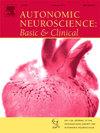Understanding neurogenic urogenital dysfunction and the clinical application of the EAN/EFAS/INUS NEUROGED guidelines
IF 3.3
4区 医学
Q2 NEUROSCIENCES
引用次数: 0
Abstract
Neurogenic urogenital dysfunction encompasses various urinary and sexual issues resulting from neurological disorders, which significantly impact patients' quality of life. To address these challenges, the European Academy of Neurology (EAN), in collaboration with the European Federation of Autonomic Societies (EFAS) and the International Neuro-Urology Society (INUS), developed the NEUROGED guidelines. These guidelines aim to provide neurologists with evidence-based recommendations for managing neurogenic bladder and sexual dysfunctions. The task force comprised 37 members from 17 countries across four continents, highlighting a comprehensive and collaborative effort. The committee has established evidence-based recommendations for 11 key questions, consensus-based recommendations for eight questions, and good practice statements for 19, addressing the complexities of managing neurogenic urogenital dysfunction. This review seeks to enhance understanding of the NEUROGED guidelines through two sections. The first section examines the neuroanatomy, pathophysiology, and clinical presentation of lower urinary tract symptoms (LUTS) and sexual dysfunction (SD), establishing a basis for the guidelines. The second section explores the impact of the NEUROGED guidelines on the investigation and management of urogenital symptoms, addressing their implementation and potential barriers in clinical practice.
了解神经源性泌尿生殖功能障碍和EAN/EFAS/INUS NEUROGED指南的临床应用
神经源性泌尿生殖功能障碍包括由神经系统疾病引起的各种泌尿和性问题,严重影响患者的生活质量。为了应对这些挑战,欧洲神经病学学会(EAN)与欧洲自主学会联合会(EFAS)和国际神经泌尿学学会(INUS)合作,制定了NEUROGED指南。这些指南旨在为神经科医生提供管理神经性膀胱和性功能障碍的循证建议。工作队由来自四大洲17个国家的37名成员组成,突出了全面和协作的努力。该委员会针对11个关键问题提出了基于证据的建议,针对8个问题提出了基于共识的建议,针对19个问题提出了良好做法声明,解决了神经源性泌尿生殖功能障碍管理的复杂性。本综述旨在通过两个部分加强对NEUROGED指南的理解。第一部分探讨下尿路症状(LUTS)和性功能障碍(SD)的神经解剖学、病理生理学和临床表现,为指南奠定基础。第二部分探讨NEUROGED指南对泌尿生殖系统症状调查和管理的影响,解决其在临床实践中的实施和潜在障碍。
本文章由计算机程序翻译,如有差异,请以英文原文为准。
求助全文
约1分钟内获得全文
求助全文
来源期刊
CiteScore
5.80
自引率
7.40%
发文量
83
审稿时长
66 days
期刊介绍:
This is an international journal with broad coverage of all aspects of the autonomic nervous system in man and animals. The main areas of interest include the innervation of blood vessels and viscera, autonomic ganglia, efferent and afferent autonomic pathways, and autonomic nuclei and pathways in the central nervous system.
The Editors will consider papers that deal with any aspect of the autonomic nervous system, including structure, physiology, pharmacology, biochemistry, development, evolution, ageing, behavioural aspects, integrative role and influence on emotional and physical states of the body. Interdisciplinary studies will be encouraged. Studies dealing with human pathology will be also welcome.

 求助内容:
求助内容: 应助结果提醒方式:
应助结果提醒方式:


